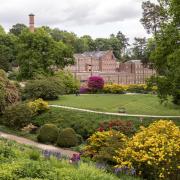Cheshire Life’s columnist on a trip to one of the oldest parishes in England
On a warm and breezy afternoon, I strolled gently into one of the oldest parishes in England in my latest quest to search out the origins of a site that has seen saintly activity since time immemorial.
In the 13th century, a church was built in Mobberley to meet the religious needs of the people.
The earliest written evidence for a church on this site dates back to 1206 AD when Patrick de Mobberley formed an Augustinian priory. However, the priory was short-lived and in 1240 it was annexed to Rocester in the county of Staffordshire. The church we see today dates back to 1245 AD.
Mobberley has its roots firmly planted in early medieval England. In 1190 King Richard sold off his English estates and it was Augustine de Brethmete who inherited Mobberley. As a generous man, he gave half to his younger brother Patrick. It was Patrick who first took the name Mobberley as his surname.
I’m a firm believer that ancient religious buildings give the greatest clues to the history of a village and St Wilfrid’s in Mobberley is no exception. The church was open on my visit to the village and I was welcomed inside to take a closer look at the treasures to be found there today.
Just inside the church stands a carved stone font formed from three pieces carved during the medieval, Tudor and Victorian periods.
The church has a long association with the Mallory family, including George Mallory, born in 1886 in Mobberley, the world-famous explorer and mountaineer, who lost his life on the slopes of Mount Everest in 1924.
As is often the case with religious sites it’s the churchyard that has some of the most interesting clues to the past. As I explored the grounds I came across many such finds, including an ancient sundial carved on the wall of the church and part of a medieval cross, but it’s an ancient gravestone dated to 1644 that tells the story of a William Griffin and his generosity to Mobberley upon his death and it’s well worth a visit to see this for yourself. My film, A History of St Wilfrid’s, shot at Mobberley, can be viewed for free with many other local history films by visiting my channel, youtube.com/Tvpresenter4history.
Look out for
A carved stone font
A medieval cross base
The sundial carved on the church wall
The grave of William Griffin dated 1644


























![Stephen Webb [Frank-N-Furter], Richard Meek [Brad], Haley Flaherty [Janet] & cast](/resources/images/128x89/1x/17679473.jpg)
![Stephen Webb [Frank-N-Furter], Richard Meek [Brad], Haley Flaherty [Janet] & cast](/resources/images/180x180/1x/17679473.jpg)
